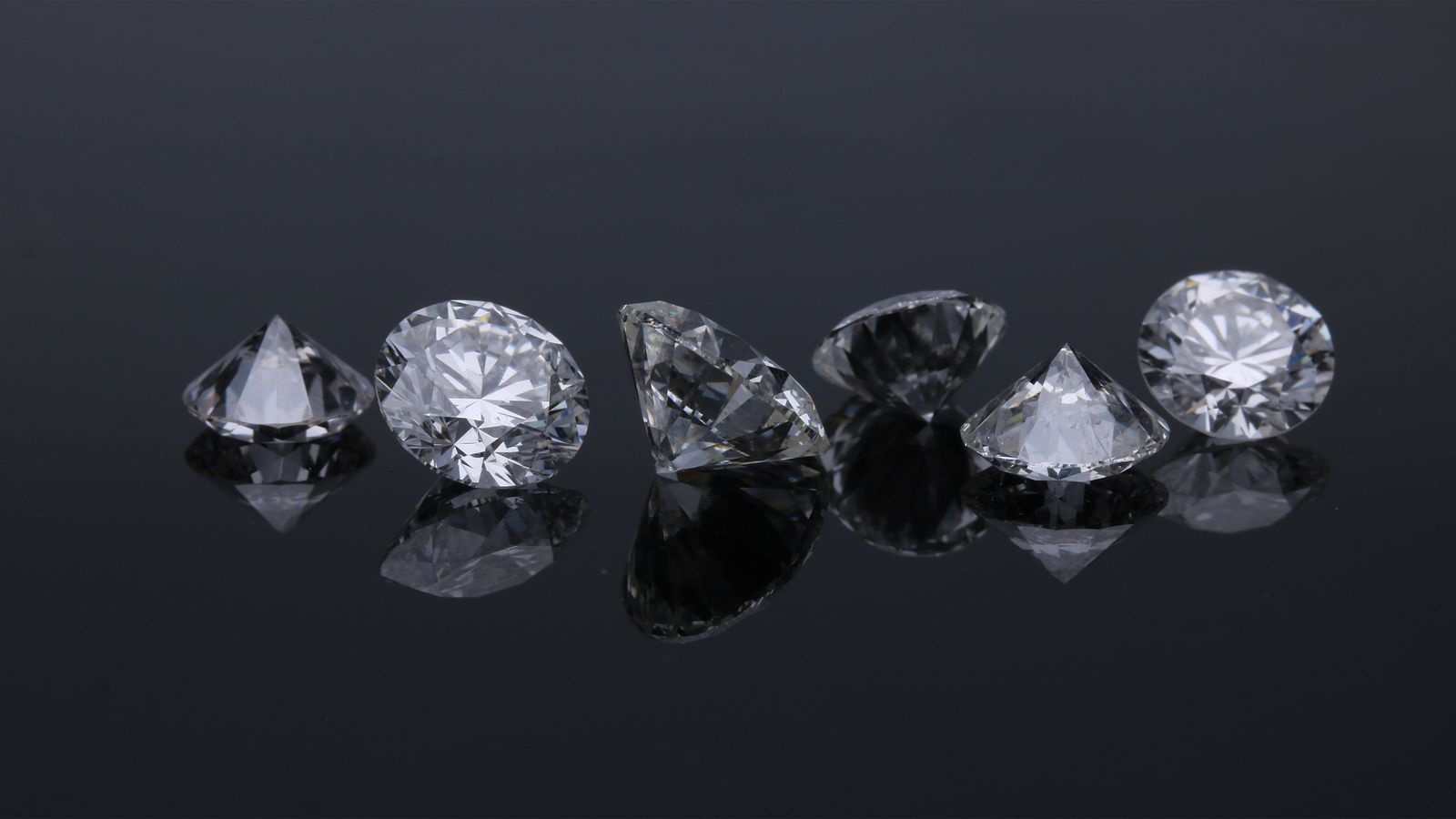Diamonds have long been considered a symbol of luxury, love, and beauty. For centuries, mined diamonds were the only option available, but with advancements in technology, lab-grown diamonds have emerged as a popular alternative. In this article, we will explore the key differences between mined and lab-grown diamonds, their benefits, and how to make an informed choice when buying a diamond.
What Are Mined Diamonds?
The Natural Beauty of Mined Diamonds
Mined diamonds are created deep within the Earth’s crust under extreme pressure and temperature over millions of years. These natural diamonds are extracted from mines, often located in remote regions, using traditional mining techniques. Mined diamonds are composed of carbon atoms arranged in a crystal lattice, which gives them their signature brilliance and hardness.
The Mining Process
The process of extracting mined diamonds involves several steps:
- Exploration: Geologists identify areas rich in diamond deposits through research and analysis.
- Mining: Large-scale mining operations, such as open-pit or underground mining, are used to extract diamonds from the earth.
- Sorting and Grading: After extraction, the diamonds are sorted based on size, shape, color, and clarity. They are then sent for further processing.
The Ethical Considerations
Mined diamonds have raised ethical concerns due to the environmental impact of mining and the potential for human rights abuses in some regions. The “blood diamond” issue refers to diamonds that are mined in conflict zones and sold to fund armed groups. As a result, many consumers are turning to lab-grown diamonds as a more ethical alternative.
What Are Lab-Grown Diamonds?
The Science Behind Lab-Grown Diamonds
Mined or lab grown diamonds, also known as synthetic diamonds or cultured diamonds, are created in controlled laboratory environments using high-tech processes that mimic the natural conditions under which mined diamonds form. The two main methods used to create lab-grown diamonds are:
- High Pressure High Temperature (HPHT): This method mimics the Earth’s natural process of diamond formation by subjecting carbon to high pressure and temperature in a lab setting.
- Chemical Vapor Deposition (CVD): This method involves using a gas mixture to deposit carbon atoms onto a substrate, which eventually forms diamond crystals.
Lab-grown diamonds are chemically, physically, and optically identical to mined diamonds. They share the same structure and properties, including hardness, brilliance, and fire.
The Advantages of Lab-Grown Diamonds
- Environmental Impact: Lab-grown diamonds have a significantly smaller environmental footprint compared to mined diamonds. The process requires less land disruption and energy, making it a more sustainable option.
- Ethical Considerations: Lab-grown diamonds are free from the ethical concerns associated with diamond mining, as they are produced in controlled, transparent environments.
- Affordability: Lab-grown diamonds are typically more affordable than mined diamonds because the production process is more cost-efficient and doesn’t involve extensive mining operations.
- Customization: Lab-grown diamonds offer greater flexibility in terms of design and size, allowing consumers to choose from a wide range of options at competitive prices.
Key Differences Between Mined and Lab-Grown Diamonds
1. Origin
- Mined Diamonds: Formed naturally over millions of years beneath the Earth’s surface.
- Lab-Grown Diamonds: Created in a laboratory through a controlled process that replicates the conditions of natural diamond formation.
2. Price
- Mined Diamonds: Typically more expensive due to the costs of mining, sorting, and grading.
- Lab-Grown Diamonds: More affordable due to a more cost-effective production process.
3. Environmental Impact
- Mined Diamonds: Mining can cause significant environmental damage, including habitat destruction, water pollution, and carbon emissions.
- Lab-Grown Diamonds: Have a smaller environmental footprint as they are produced in controlled settings with fewer resources and less land disruption.
4. Ethical Considerations
- Mined Diamonds: Can be linked to unethical practices, such as human rights violations and funding conflicts.
- Lab-Grown Diamonds: Are free from these ethical concerns, offering a more responsible alternative.
5. Appearance
- Mined Diamonds: While mined diamonds can vary in quality, they are highly valued for their natural origins.
- Lab-Grown Diamonds: Identical in appearance to mined diamonds, with the same clarity, color, and brilliance. The only difference is the origin.
6. Rarity
- Mined Diamonds: Considered rare because they take millions of years to form.
- Lab-Grown Diamonds: Not rare, as they can be produced on demand, though they are still highly valued for their beauty and quality.
How to Choose Between Mined and Lab-Grown Diamonds
When choosing between mined and lab grown diamonds, several factors should be considered:
- Budget: If you’re on a budget, lab-grown diamonds can offer better value for money while still providing a stunning piece of jewelry.
- Ethics: If ethical concerns are a priority for you, lab-grown diamonds may be the better choice, as they eliminate the issues associated with mining practices.
- Personal Preference: Some people prefer the tradition and history behind a mined diamond, while others may appreciate the modern, sustainable appeal of lab-grown diamonds.
- Environmental Impact: If sustainability is important to you, lab-grown diamonds provide an eco-friendly option that minimizes environmental damage.
Conclusion
Both mined and lab-grown diamonds offer unique advantages, but the choice ultimately depends on your values, preferences, and budget. Mined diamonds remain a symbol of tradition and natural rarity, while lab-grown diamonds provide an ethical, sustainable, and more affordable alternative. No matter which option you choose, both types of diamonds are beautiful, durable, and sure to last a lifetime.
Whether you opt for a mined or lab-grown diamond, understanding the differences and benefits will help you make an informed decision and ensure that your diamond purchase aligns with your personal beliefs and desires.

